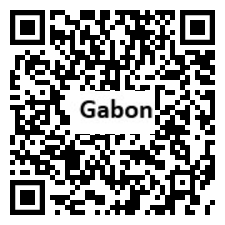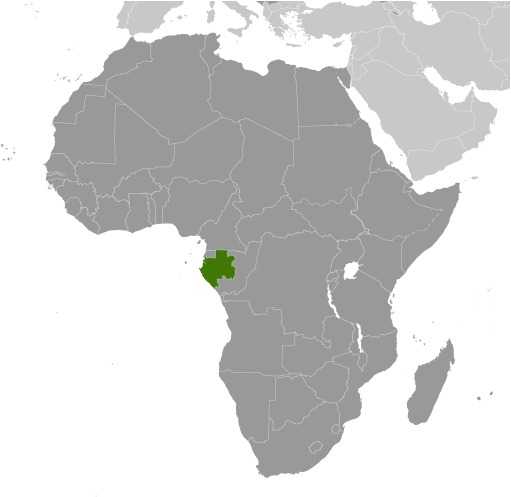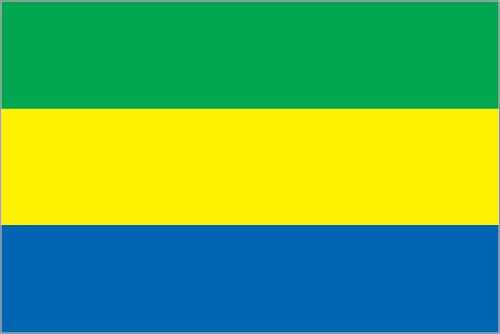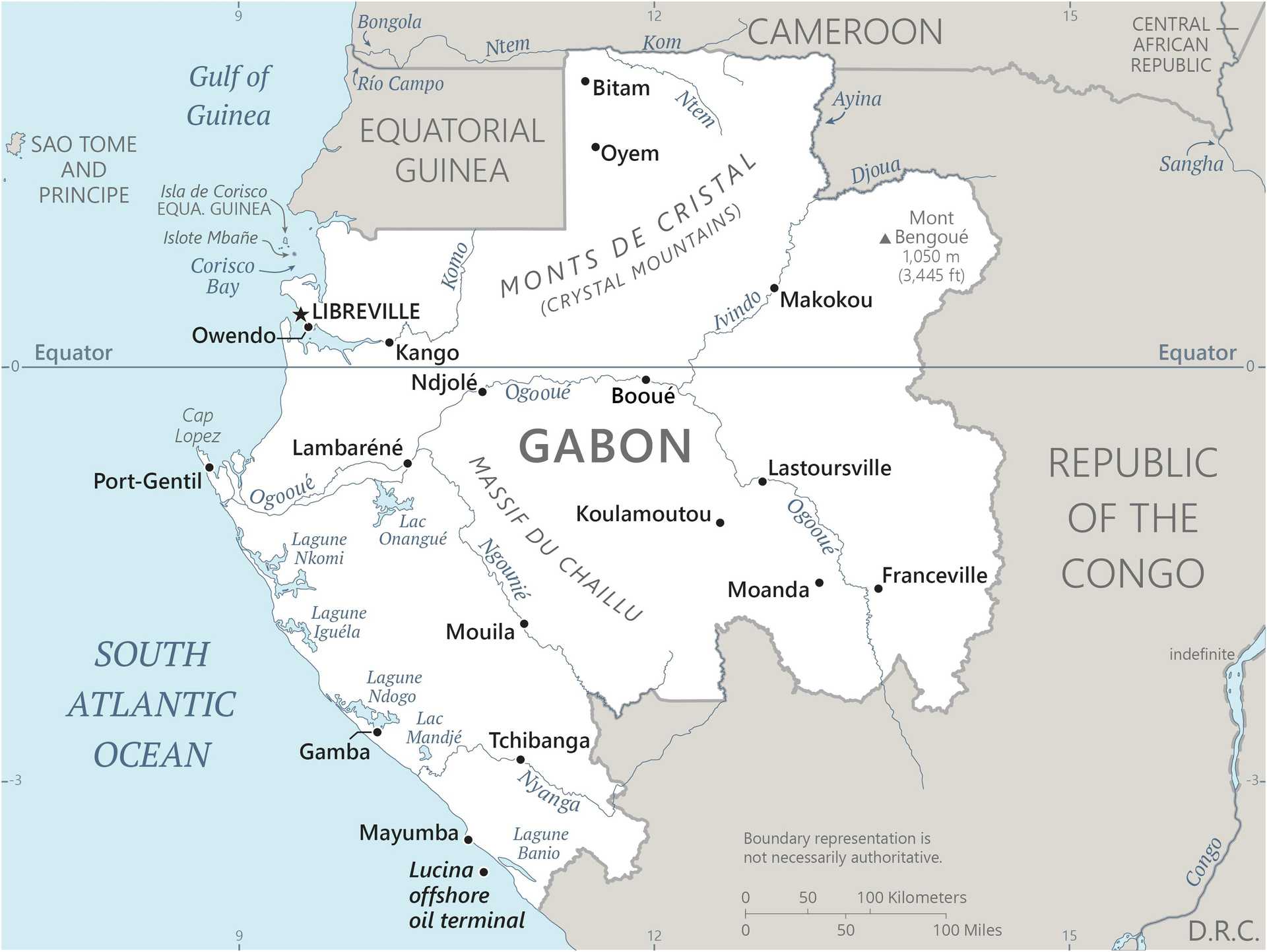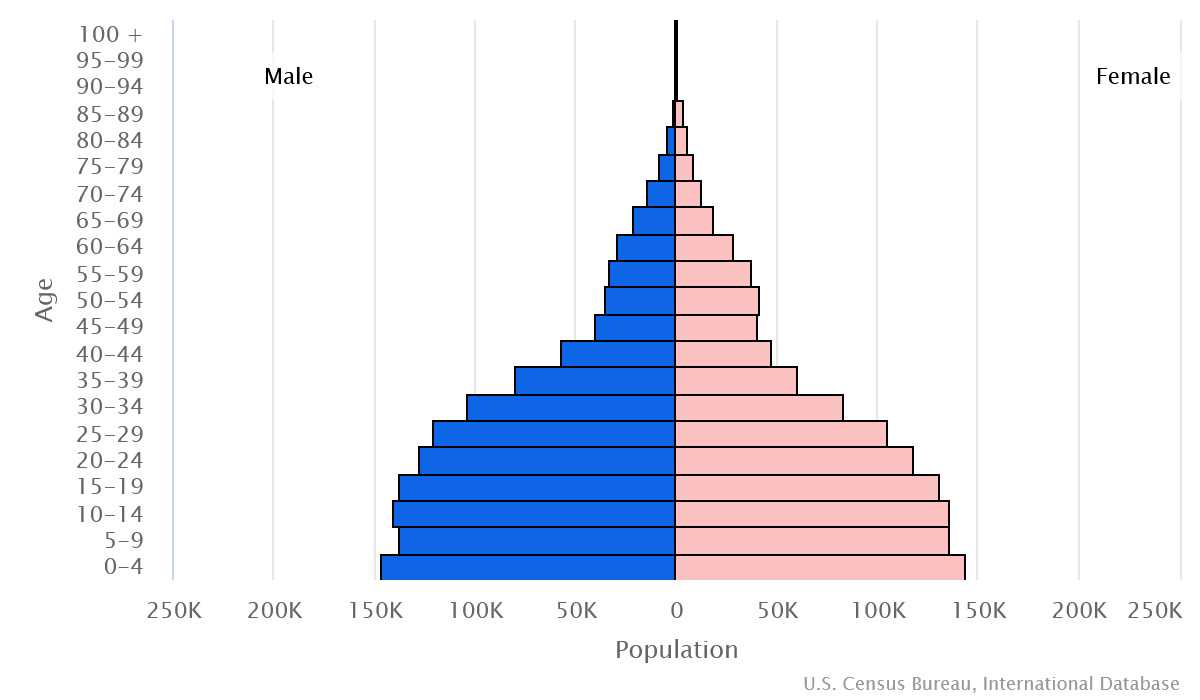Introduction
Background
Gabon became independent from France in 1960. El Hadj Omar BONGO Ondimba and then his son, Ali BONGO Ondimba, ruled the country from 1967 to 2023, when a military coup ended the dynasty. Gen. Brice OLIGUI Nguema, a transitional president, now leads Gabon.
Geography
Area
total : 267,667 sq km
land: 257,667 sq km
water: 10,000 sq km
Climate
tropical; always hot, humid
Natural resources
petroleum, natural gas, diamond, niobium, manganese, uranium, gold, timber, iron ore, hydropower
People and Society
Population
total: 2,455,105
Ethnic groups
Fang 23.5%, Shira-Punu'Vii 20.6%, Nzabi-Duma 11.2%, Mbede-Teke 5.6%, Myene 4.4%, Kota-Kele 4.3%, Okande-Tsogho 1.6%, other 12.6%, foreigner 16.2% (2021 est.)
Languages
French (official), Fang, Myene, Nzebi, Bapounou/Eschira, Bandjabi
Religions
Protestant 46.4% (Revival Church 37%, other Protestant 9.4%), Roman Catholic 29.8%, other Christian 4%, Muslim 10.8%, traditional/animist 1.1%, other 0.9%, none 7% (2019-21 est.)
Population growth rate
2.37% (2024 est.)
Government
Government type
presidential republic
Capital
name: Libreville
Executive branch
chief of state: Transitional President Gen. Brice OLIGUI Nguema (since 4 September 2023)
head of government: Prime Minister Raymond NDONG SIMA (since 7 September 2023)
Legislative branch
description: Transitional Parliament (formerly the bicameral Parliament) consists of:
Senate (70 seats; members appointed by Transitional president; member term NA)
National Assembly (98 seats; members appointed by the Transitional president; member term NA)
note - all members represent legally recognized political parties or leading political figures, civil society, and defense and security forces
Economy
Economic overview
natural-resource-rich, upper-middle-income, Central African economy; significant reliance on oil and mineral exports; highly urbanized population; high levels of poverty and unemployment; uncertainty on institutional and development reform progress following 2023 military coup
Real GDP (purchasing power parity)
$48.201 billion (2023 est.)
$47.134 billion (2022 est.)
$45.776 billion (2021 est.)
Real GDP per capita
$19,800 (2023 est.)
$19,700 (2022 est.)
$19,600 (2021 est.)
Agricultural products
plantains, cassava, sugarcane, yams, taro, vegetables, maize, groundnuts, game meat, rubber (2022)
Industries
petroleum extraction and refining; manganese, gold; chemicals, ship repair, food and beverages, textiles, lumbering and plywood, cement
Exports
$12.935 billion (2022 est.)
$11.229 billion (2021 est.)
$7.275 billion (2020 est.)
Exports - partners
China 43%, South Korea 8%, Italy 7%, India 7%, Indonesia 5% (2022)
Exports - commodities
crude petroleum, manganese ore, wood, veneer sheets, refined petroleum (2022)
Imports
$3.499 billion (2022 est.)
$3.353 billion (2021 est.)
$3.454 billion (2020 est.)
Imports - partners
China 22%, France 21%, UAE 5%, US 5%, Belgium 4% (2022)
Imports - commodities
poultry, plastic products, iron pipes, fish, excavation machinery (2022)
Exchange rates
Cooperation Financiere en Afrique Centrale francs (XAF) per US dollar -
Page last updated: Wednesday, July 24, 2024
